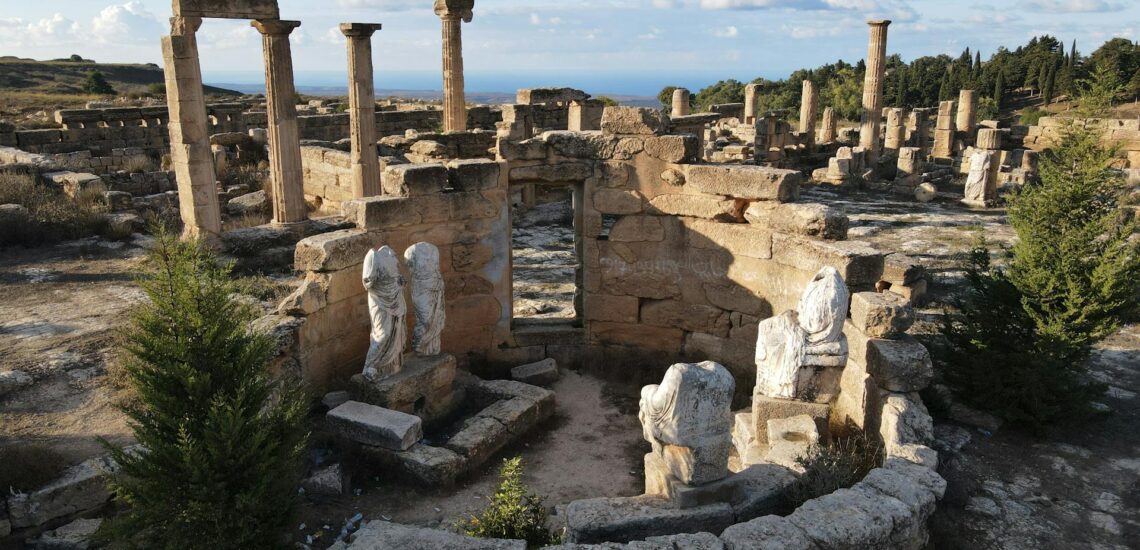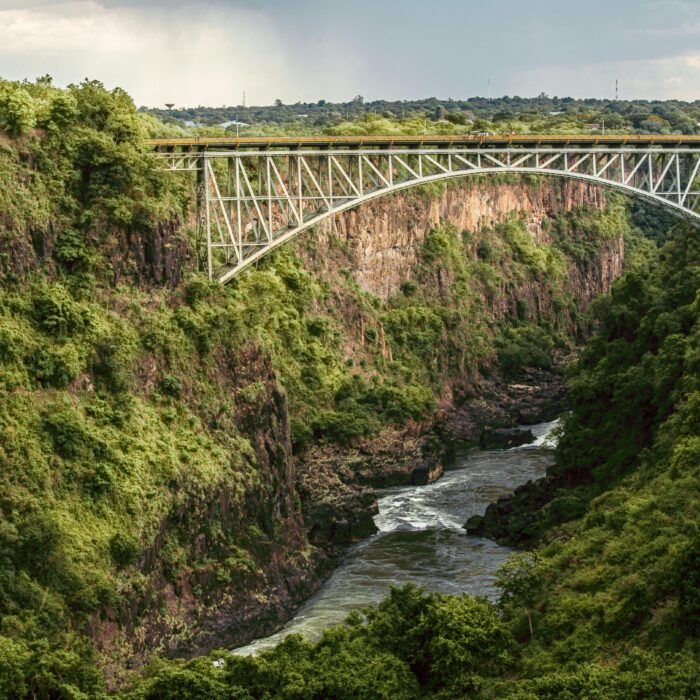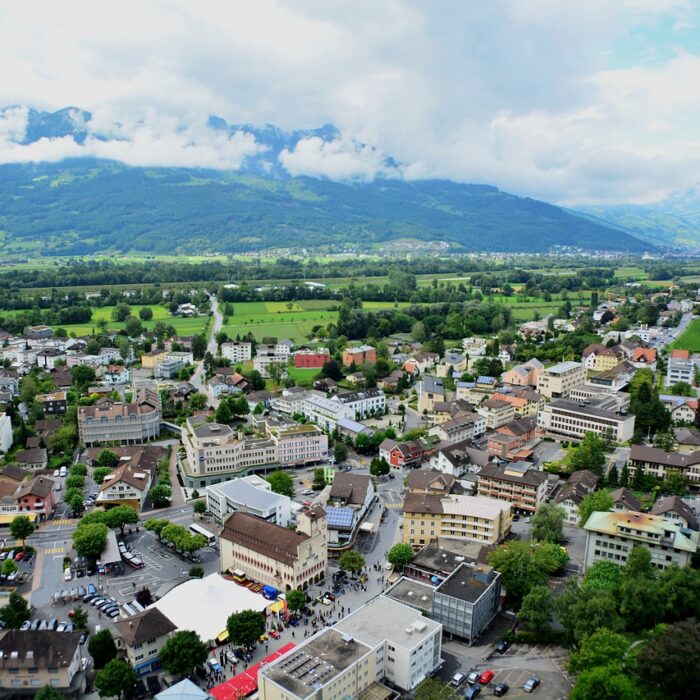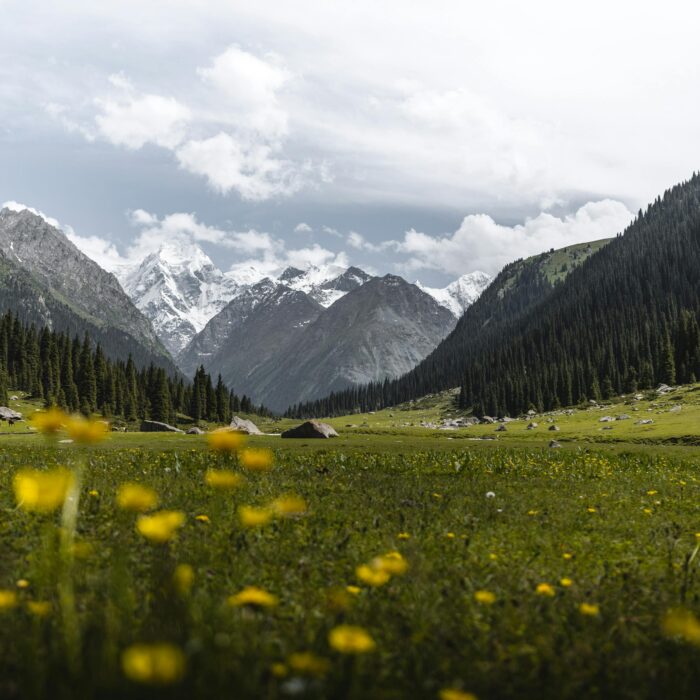Краткие факты о Ливии:
- Население: Около 7 миллионов человек.
- Столица: Триполи.
- Крупнейший город: Триполи.
- Официальный язык: Арабский.
- Другие языки: Берберские языки, итальянский и английский.
- Валюта: Ливийский динар (LYD).
- Правительство: Временное правительство единства (может быть изменено из-за продолжающихся конфликтов и политической нестабильности).
- Основная религия: Ислам, преимущественно суннитский.
- География: Расположена в Северной Африке, граничит со Средиземным морем на севере, Египтом на востоке, Суданом на юго-востоке, Чадом и Нигером на юге, а также Алжиром и Тунисом на западе.
Факт 1: Ливия на 90% состоит из пустыни
Ливия – это преимущественно пустыня, около 90 % ее территории занимает обширная пустыня Сахара. Этот обширный засушливый ландшафт доминирует в стране, характеризуясь песчаными дюнами, скалистыми плато и скудной растительностью.
Ливийская пустыня, являющаяся частью большой Сахары, включает в себя одни из самых негостеприимных регионов на Земле. Здесь находятся такие впечатляющие геологические образования, как песчаное море Убари с его поразительными дюнными полями и горы Акакус, известные древними наскальными рисунками. Экстремальные условия пустыни – сильная жара днем, холодные ночи и минимальное количество осадков – создают сложную среду для жизни.
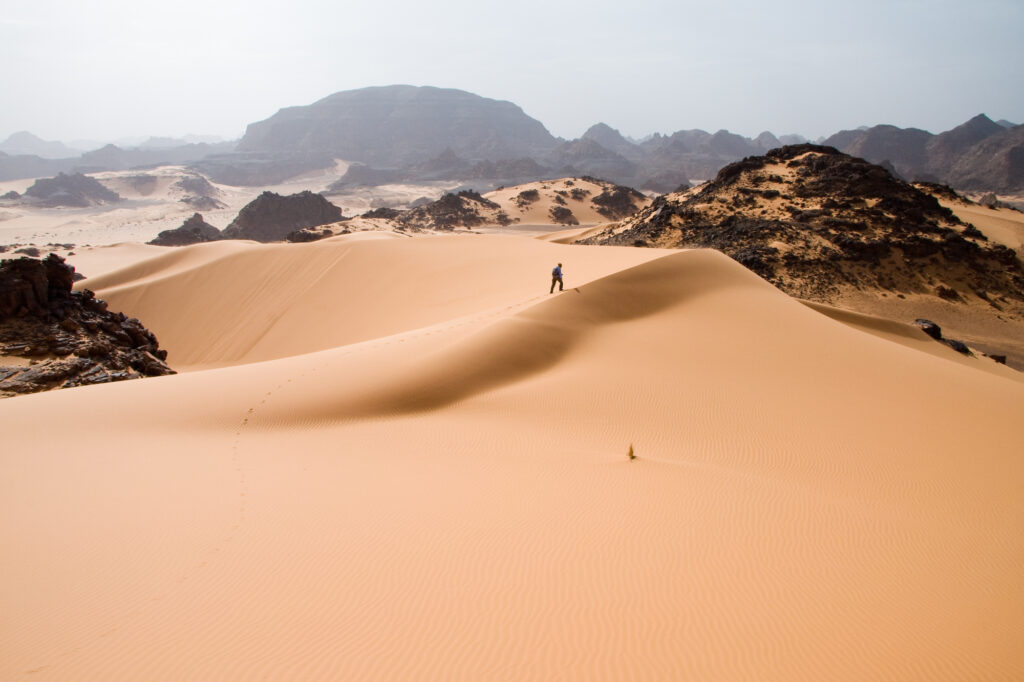
Факт 2: Ливия обладает одними из самых больших запасов нефти и газа среди всех стран Африки
Ливия может похвастаться одними из крупнейших запасов нефти и газа в Африке, которые играют важнейшую роль в экономике страны и ее положении на мировом энергетическом рынке. Вот несколько ключевых моментов, касающихся запасов нефти и газа в Ливии:
- Запасы нефти: Доказанные запасы нефти в Ливии оцениваются примерно в 48,4 миллиарда баррелей, что делает ее крупнейшим держателем нефтяных запасов в Африке и одним из десяти крупнейших в мире. Эти запасы сосредоточены в основном в бассейне Сирт, на который приходится большая часть добычи в стране.
- Запасы природного газа: Помимо значительных запасов нефти, Ливия также обладает значительными запасами природного газа, которые оцениваются примерно в 54,6 триллиона кубических футов. Эти запасы находятся в основном в западной и восточной частях страны, а ключевыми районами добычи являются месторождения Вафа и Бахр-Эссалам.
- Добыча и экспорт: Нефтегазовый сектор Ливии является краеугольным камнем ее экономики, на него приходится значительная часть ВВП и государственных доходов. Страна экспортирует большую часть своей нефти и газа, в основном на европейские рынки. Основные экспортные терминалы включают порты Эс-Сидер, Рас-Лануф и Завия.
Факт 3: В Ливии был реализован очень амбициозный водный проект
Ливийский проект “Великая рукотворная река” (GMMR) считается одним из самых амбициозных водохозяйственных проектов в истории. Это колоссальное начинание было направлено на решение проблемы острой нехватки воды в стране путем добычи огромного количества подземных вод из водоносного горизонта Нубийского песчаника, расположенного глубоко под пустыней Сахара. Цель проекта заключалась в транспортировке этого ценного ресурса по разветвленной сети трубопроводов протяженностью более 4 000 километров в густонаселенные прибрежные города Ливии, такие как Триполи, Бенгази и Сирт.
Проект GMMR, начатый в 1980-х годах, был реализован в несколько этапов, первый из которых завершился в 1991 году. Система кардинально изменила водоснабжение страны, позволив развивать сельское хозяйство в ранее бесплодных пустынных районах и обеспечив надежный источник воды для городских центров. Это значительно повысило уровень жизни миллионов ливийцев, что свидетельствует о глубоком экономическом и социальном воздействии проекта.
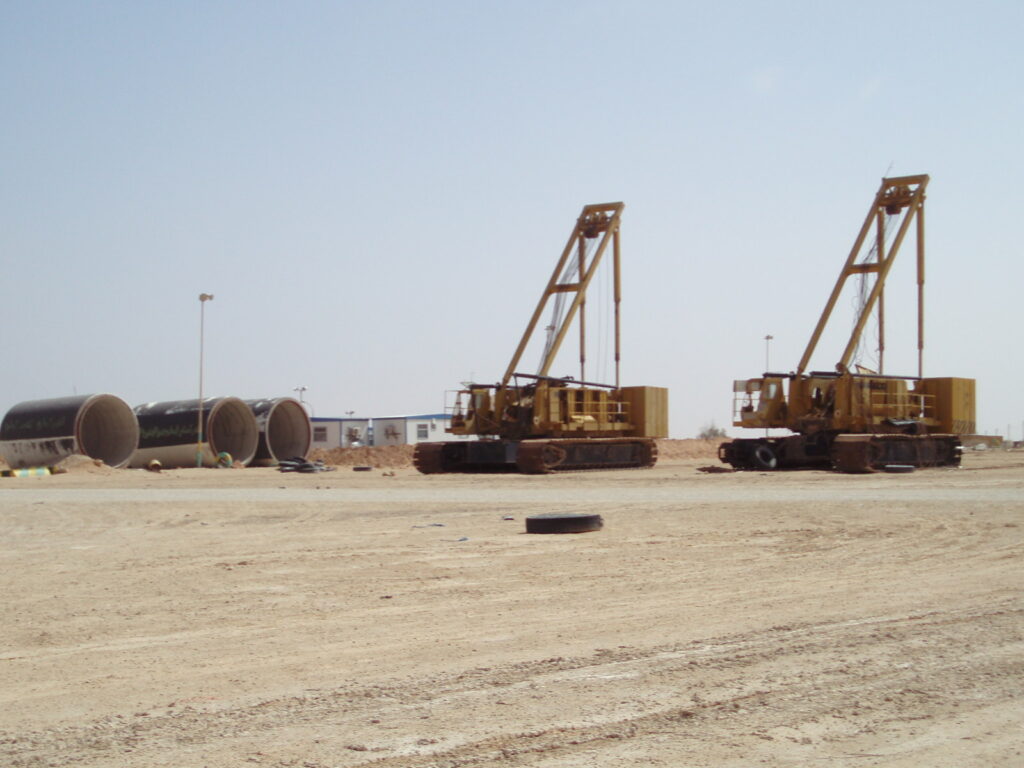
Факт 4: Ливийский лидер Муаммар Каддафи убит протестующими
Муаммар Каддафи, многолетний лидер Ливии, был убит повстанцами в ходе гражданской войны в Ливии 20 октября 2011 года. Каддафи правил Ливией более четырех десятилетий, с тех пор как пришел к власти в результате переворота в 1969 году, установив авторитарный режим, характеризующийся жестким контролем над политической жизнью, СМИ и экономикой.
В 2011 году под влиянием восстаний “арабской весны”, охвативших Ближний Восток и Северную Африку, в Ливии вспыхнули протесты против правления Каддафи. Ситуация быстро переросла в полномасштабную гражданскую войну между верными Каддафи силами и повстанческими группировками. В конфликт вмешалась НАТО, которая нанесла авиаудары по военным объектам Каддафи в соответствии с мандатом ООН по защите гражданского населения.
После нескольких месяцев напряженных боев оплот Каддафи в столице Триполи пал под ударами повстанцев в августе 2011 года. Каддафи бежал в свой родной город Сирт, где продолжил сопротивление повстанческим силам. 20 октября 2011 года Каддафи был захвачен бойцами Национального переходного совета (НПС) при попытке бегства из Сирта. Впоследствии он был убит при неоднозначных обстоятельствах, что ознаменовало конец его 42-летнего правления.
Факт 5: Территория Ливии входила в состав древних империй
В древности Ливия находилась под влиянием и контролем различных могущественных цивилизаций, что определило ее развитие и наследие.
В VII веке до н. э. финикийцы основали поселения вдоль ливийского побережья, самым заметным из которых был Карфаген на территории современного Туниса. Позднее эти поселения стали частью Карфагенской империи, известной своим грозным флотом и торговым превосходством во всем Средиземноморье. Город Лептис Магна, расположенный на территории современной Ливии, стал крупным центром торговли и культуры под властью карфагенян.
После Пунических войн, завершившихся разрушением Карфагена в 146 году до н. э., территории Ливии перешли под контроль римлян. Римляне значительно развили этот регион, особенно города Лептис Магна, Сабрата и Оэа (современный Триполи). Эти города процветали под римским владычеством, став важными центрами торговли, культуры и управления. Лептис Магна, в частности, славится своими впечатляющими руинами, включая большой амфитеатр, базилику и триумфальную арку, демонстрирующие римское архитектурное и инженерное мастерство.
После упадка Римской империи регион попал под влияние Византийской империи. В византийский период многие римские сооружения были сохранены и переработаны, а также были построены новые христианские церкви и укрепления. Византийцы контролировали Ливию вплоть до арабской исламской экспансии в VII веке н. э., которая принесла в регион значительные культурные и религиозные изменения.
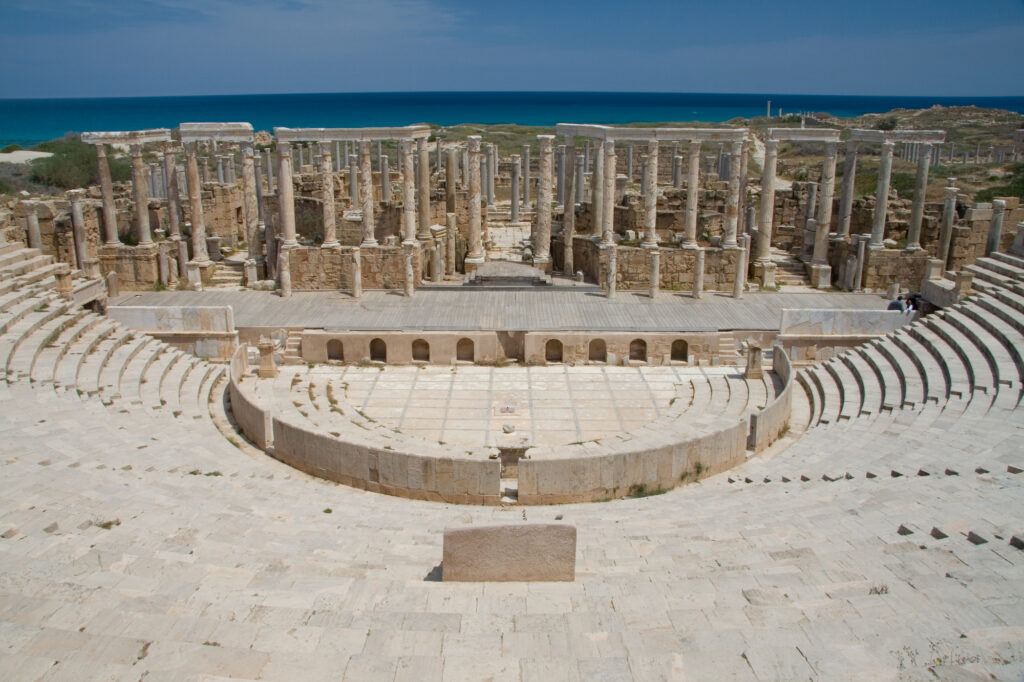
Факт 6: Ливия зависит от импорта продовольствия
Ливия в значительной степени зависит от импорта продовольствия из-за засушливого климата и пустынной местности, которые затрудняют крупномасштабное сельское хозяйство. Около 90 % территории страны занимает пустыня Сахара, пахотных земель очень мало, а нехватка воды остается серьезной проблемой, несмотря на такие усилия, как проект “Великая рукотворная река”.
Экономика страны, исторически зависящая от экспорта нефти, привела к недостаточным инвестициям в сельское хозяйство. Политическая нестабильность, возникшая после падения Муаммара Каддафи в 2011 году, еще больше нарушила сельскохозяйственное производство и цепочки поставок. Быстрая урбанизация и рост населения увеличили спрос на продовольствие, увеличив разрыв между внутренним производством и потреблением.
Факт 7: В Ливии находится 5 объектов Всемирного наследия ЮНЕСКО.
Эти объекты охватывают различные периоды и цивилизации, демонстрируя значение Ливии в древнем и средневековом мире.
- Археологическая зона Киринеи: Основанная греческими поселенцами в VII веке до н. э., Киринея стала одним из главных городов эллинского мира. Здесь, недалеко от современного города Шаххат, находятся впечатляющие руины, включая храмы, некрополь и хорошо сохранившийся театр, свидетельствующие о величии города и его роли в качестве центра обучения и культуры.
- Археологическая зона Лептис Магна: Один из самых впечатляющих римских городов Средиземноморья, Лептис Магна славится своими хорошо сохранившимися руинами. Расположенный недалеко от современного города Аль-Хумс, город включает в себя великолепный амфитеатр, базилику и арку Септимия Севера, что подчеркивает важность города как крупного торгового и административного центра во времена Римской империи.
- Археологический памятник Сабрата: Еще один значительный римский объект, Сабрата, расположенный к западу от Триполи, представляет собой потрясающие руины с видом на Средиземное море. Город был важным финикийским торговым пунктом, прежде чем превратился в процветающий римский город. Среди основных достопримечательностей – театр, различные храмы и прекрасные мозаики.
- Наскальные рисунки Тадрарт-Акакус: расположенные в горах Акакус в пустыне Сахара, эти места содержат тысячи наскальных рисунков и картин, датируемых 12 000 лет до нашей эры. На них изображены различные сцены, в том числе животные, деятельность людей и ритуальные обряды, что дает бесценное представление о доисторических культурах этого региона.
- Старый город Гадамеш: Часто называемый “жемчужиной пустыни”, Гадамеш – это древний город-оазис, расположенный в северо-западной части Ливии. Старый город отличается традиционной архитектурой из глинобитного кирпича, крытыми переулками и многоэтажными домами, спроектированными для борьбы с экстремальным климатом пустыни. Гадамеш – один из наиболее хорошо сохранившихся примеров традиционного поселения досахарского периода.
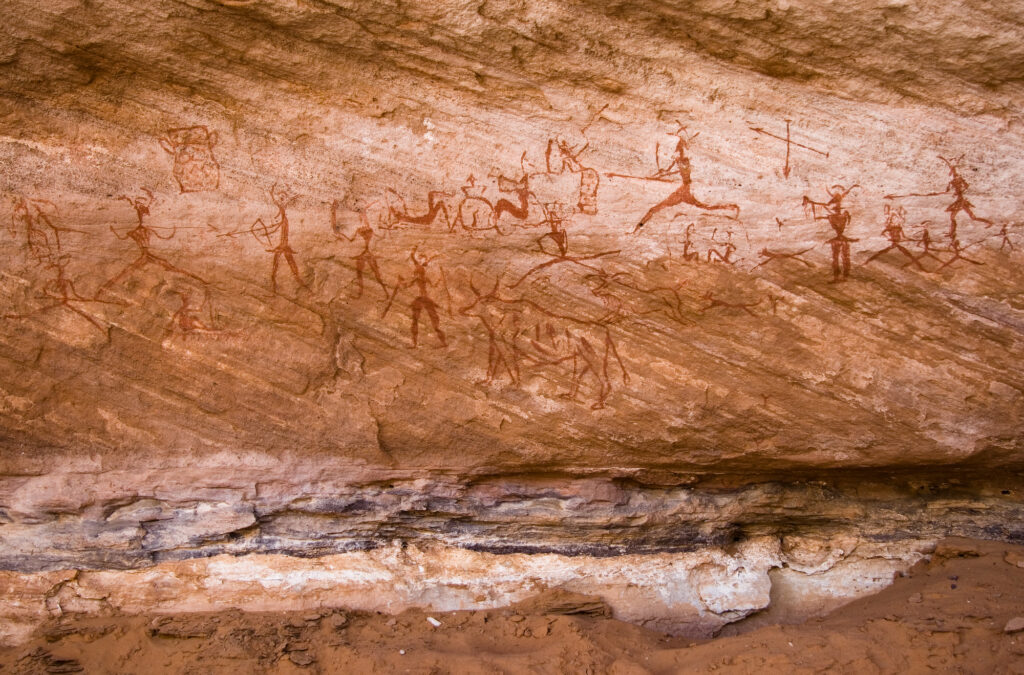
Примечание: Если вы решили посетить эту страну, обратите внимание на безопасность. Также проверьте, нужны ли вам международные водительские права для вождения в Ливии.
Факт 8: Когда-то в Ливии был король
С 1951 по 1969 год Ливией правил король Идрис I. Он сыграл важную роль в обретении Ливией независимости от итальянского колониального господства и последующем создании Королевства Ливия. Король Идрис I принадлежал к династии Сенуси, выдающемуся исламскому политико-религиозному ордену в Северной Африке.
В 1969 году в результате государственного переворота, возглавляемого Муаммаром Каддафи, тогда еще молодым армейским офицером, был свергнут режим короля Идриса I. Это ознаменовало конец монархии в Ливии.
Факт 9: В пустыне в Ливии находится древний вулкан
В пустынном регионе Ливии находится древнее вулканическое поле, известное как Вав-ан-Намус. Это уникальное геологическое образование расположено на юго-востоке страны, в Ливийской пустыне (часть большой пустыни Сахара). Вав-ан-Намус примечателен своими вулканическими особенностями, включая вулканическую кальдеру, окруженную потоками черной базальтовой лавы и вулканическими конусами.
Центральным элементом Вав-ан-Намуса является кальдера, в которой находится озеро с соленой водой, известное как Умм-аль-Маа. Название озера в переводе с арабского означает “Мать воды”, и оно представляет собой разительный контраст с окружающим засушливым пустынным ландшафтом. Считается, что кальдера образовалась в результате вулканической активности миллионы лет назад, хотя точное время ее извержений и последующая эволюция до сих пор являются предметом геологических исследований.
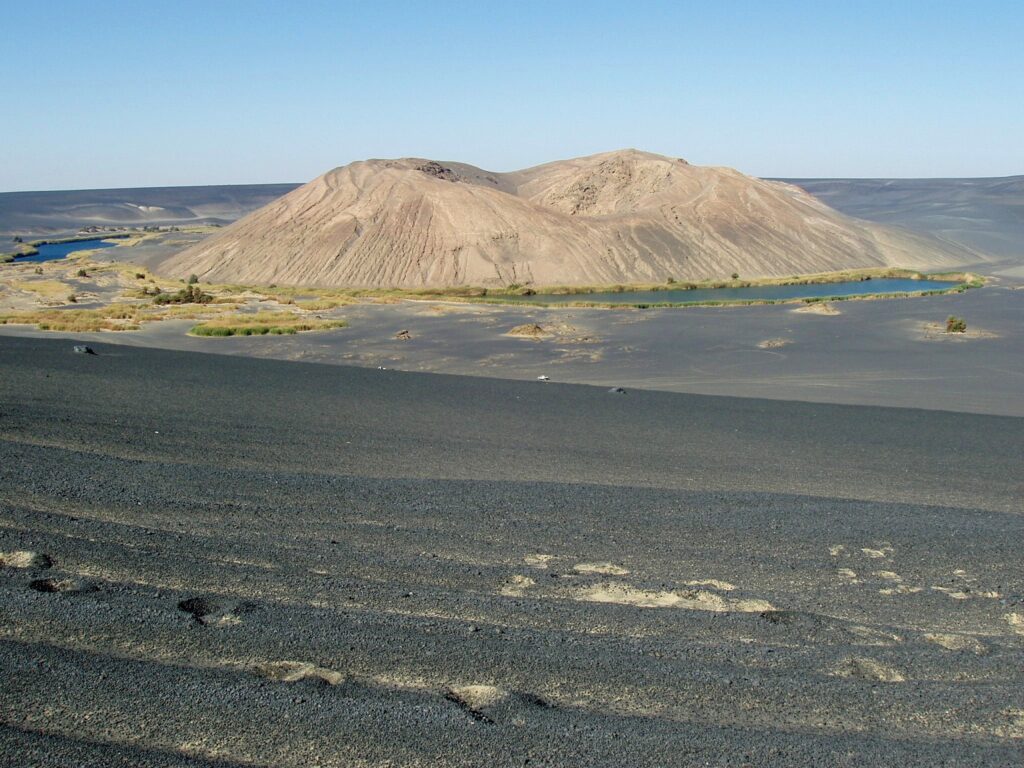
Факт 10: Ливия по-прежнему не является безопасным местом для путешественников
Ливия остается крайне небезопасным местом для путешественников из-за продолжающейся политической нестабильности, вооруженных конфликтов между ополченцами и присутствия экстремистских группировок. Похищения людей, терроризм и случайное насилие представляют значительную опасность. Гражданские беспорядки, протесты и демонстрации могут быстро разрастаться. Инфраструктура серьезно повреждена, что негативно сказывается на работе основных служб. Большинство правительств рекомендуют воздержаться от поездок в Ливию из-за серьезных проблем с безопасностью. Путешественникам грозит чрезвычайная опасность, а посещение исторических и культурных мест нецелесообразно и рискованно.

Опубликовано Июнь 30, 2024 • 9м на чтение

